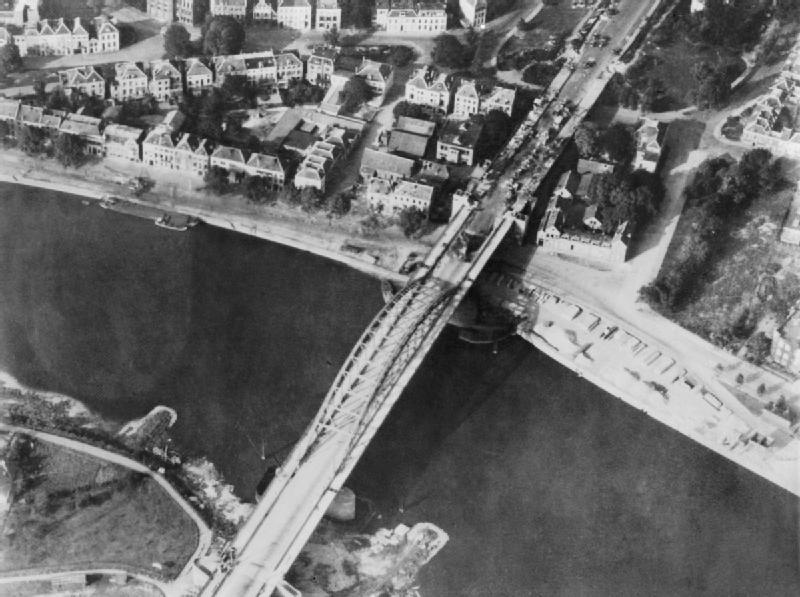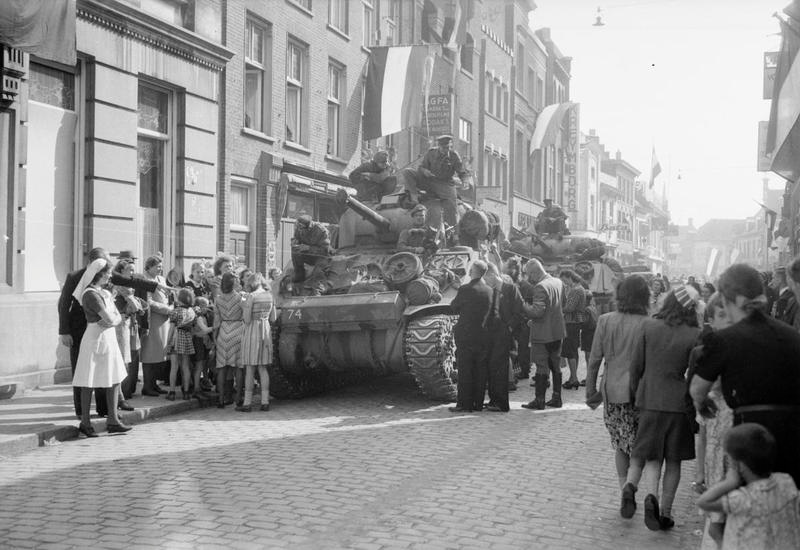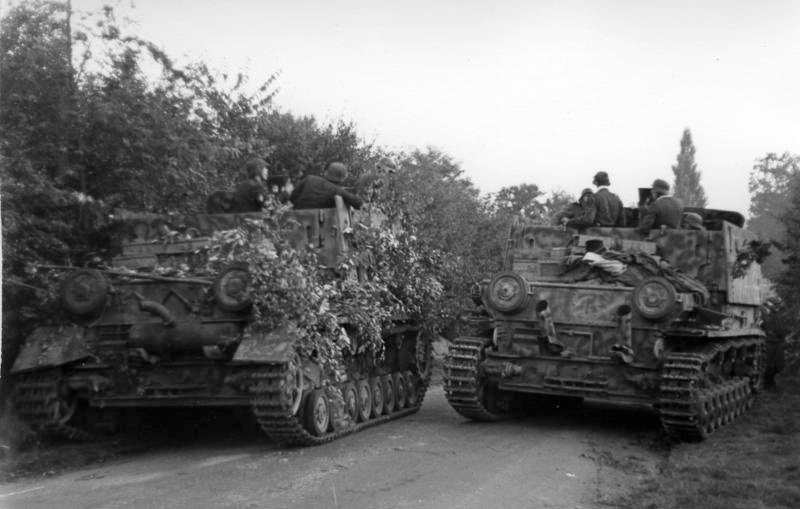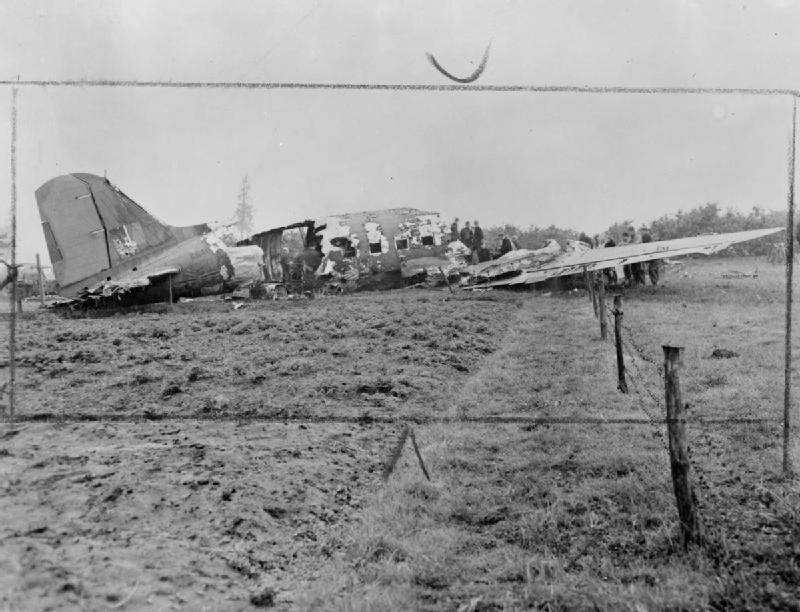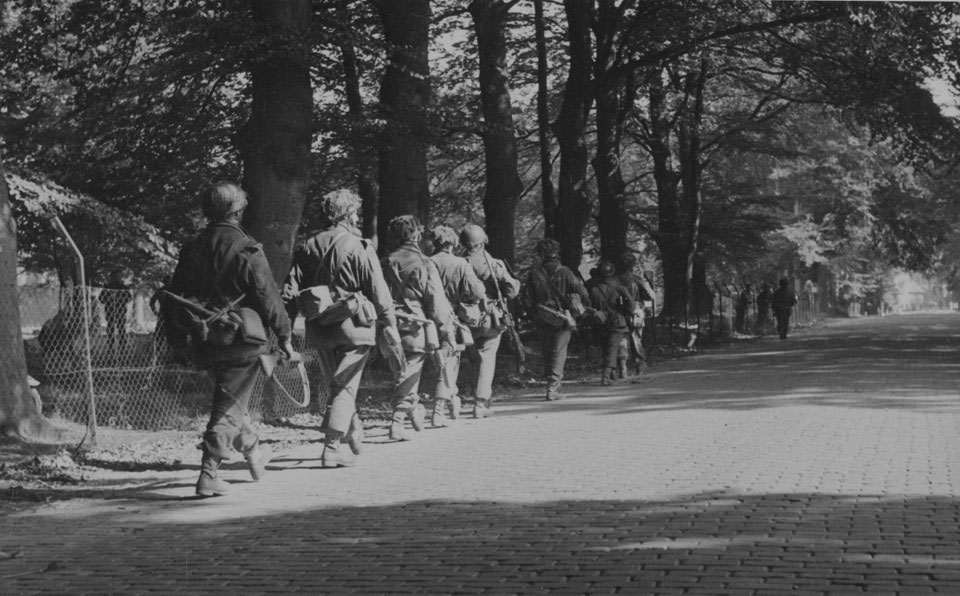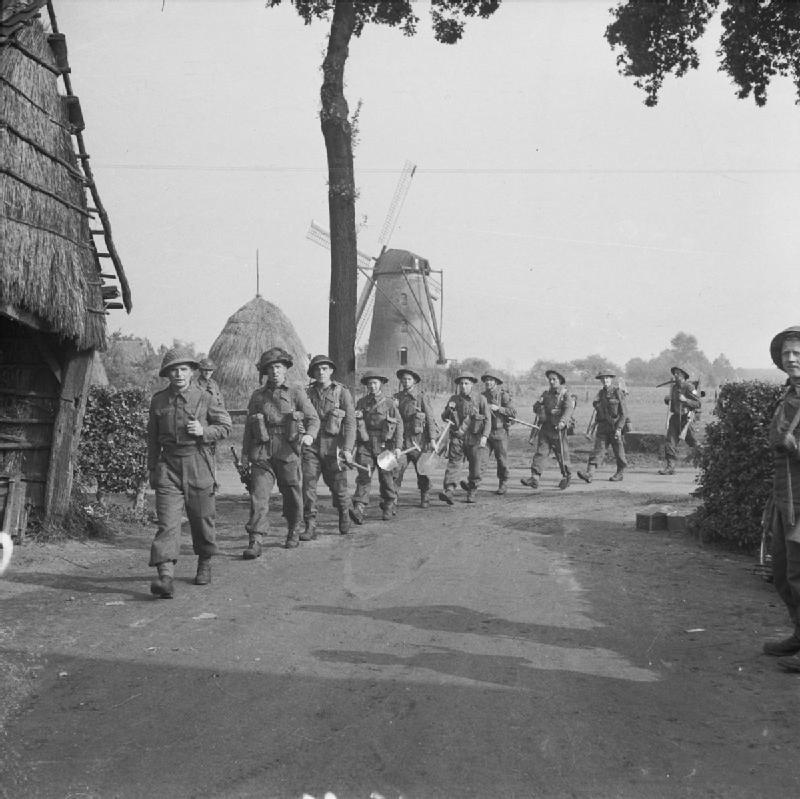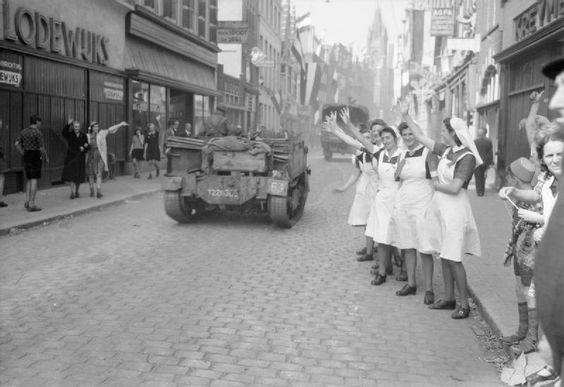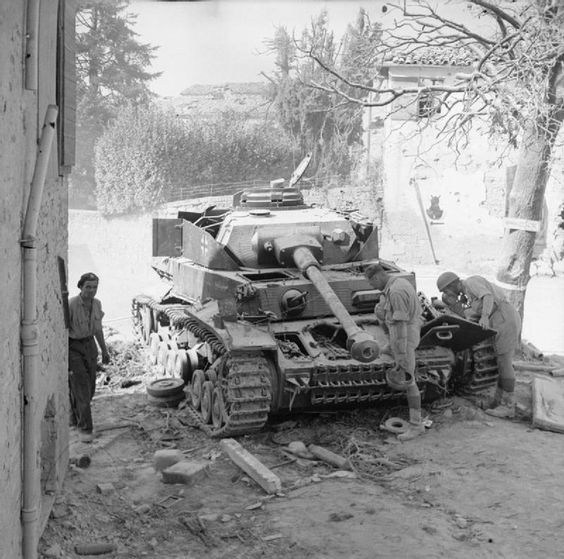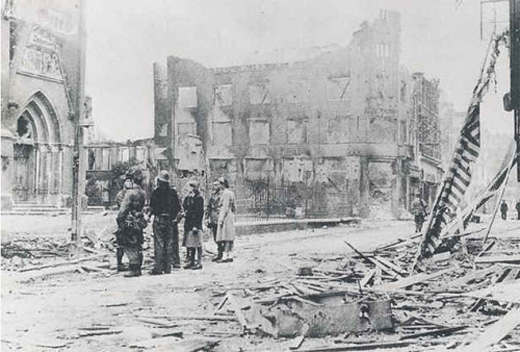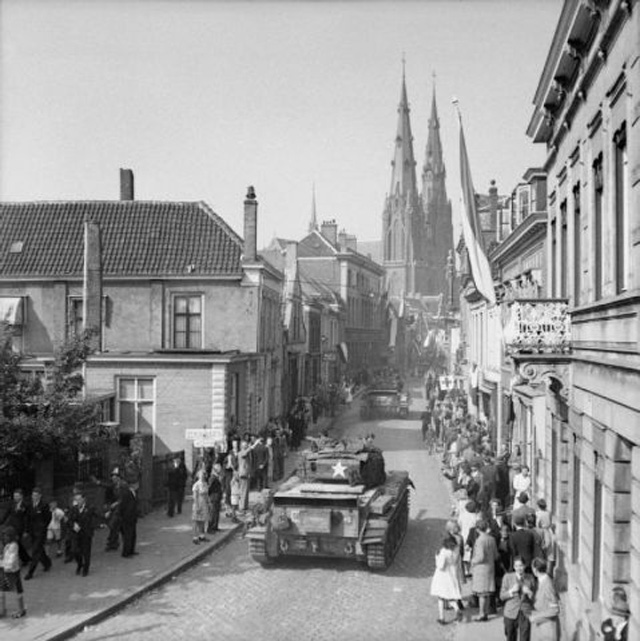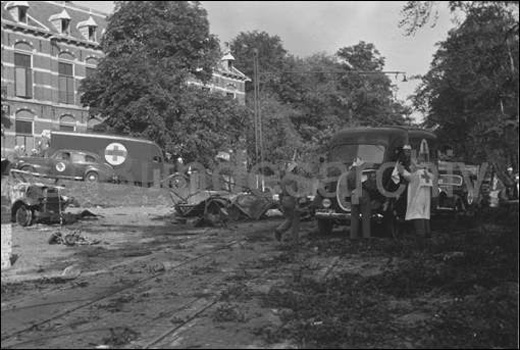Air Operations, Bonin Islands
29 30th Heavy Bomb Group B-24s based at Saipan attack shipping at Chichi Jima.
[Air Operations, CBI
CHINA- 28 341st Medium Bomb Group B-25s attack Lingling and four other cities in east-central China.
- 14th Air Force fighter-bombers mount more than 150 effective sorties against numerous targets through east-central China, especially at Changsha.
- A 5th CACW Fighter Group P-40 downs an A6M Zero in an early-morning engagement near Changsha.
- An 81st Fighter Group P-47 downs a Ki-44 'Tojo' fighter over Koyiu during a late-morning engagement.
- 18 7th Heavy Bomb Group B-24s transport fuel from India to Chengkung and Liuchow.
Air Operations, East Indies
- FEAF B-24s, B-25s, and P-38s attack the Langoan airfield on Celebes and port facilities, fuel stores, bivouacs, anti-aircraft batteries throughout northeastern Celebes.
- VP-33 PBYs begin operating from Morotai, where they are serviced by the seaplane tender USS Tangier.
- During the night, V Bomber Command A-20s and V Fighter Command P-47s attack Kaoe, Halmahera.
Air Operations, Europe
100 German bombers attack Eindhoven, the only time long-range Luftwaffe aircraft are used in the fight for western Europe.
RAF BOMBER COMMANDDaylight Ops:
- 28 Lancasters, 27 Halifaxes and 1 Mosquito of Nos. 6 and 8 Groups are sent to attack the Domberg coastal battery but are recalled.
- 1 Halifax crashes in England.
- 6 Hudsons and 4 Stirlings fly Resistance operations and there are 8 RCM sorties.
- 227 Lancasters and 10 Mosquitos of No. 5 Group are sent to the twin towns of Mönchengladbach/Rheydt, key traffic centers behind the Siegfried Line. Bomber Command claims severe damage to both towns, but particularly to Mönchengladbach.
- 4 Lancaster and 1 Mosquito are lost.
- The Master Bomber for this raid is Wing Commander Guy Gibson, VC, DSO, DFC flying a No. 627 Squadron Mosquito from Coningsby, where he was serving as Base Operations Officer. Gibson's instructions over the target are heard throughout the raid and give no hint of trouble, but his aircraft crashes in flames - according to a Dutch eyewitness - before crossing the coast of Holland for the homeward flight over the North Sea. There are no German fighter claims for the Mosquito. It may have been damaged by flak over the target or on the return flight, or it may have developed engine trouble. It is possible it was flying too low for the crew to escape by parachute. Gibson and his navigator, Squadron Leader J. B. Warwick, DFC are both killed and are buried in the Roman Catholic Cemetery at Steenbergen-en-Kruisland, 13 km north of Bergen-op-Zoom. Theirs are the only graves of Allied servicemen in the cemetery.
- Aircraft of No. 100 Group fly 17 Mosquito and 15 RCM sorties.
- There are no losses.
GERMANY:
- 679 8th Air Force B-17s, escorted by 240 VIII Fighter Command fighters, attack bridges, marshalling yards, rail lines, and ordnance depots throughout western Germany.
- 7 B-17s and 1 escort fighter are lost
- VIII Fighter Command pilots down 10 Luftwaffe fighters over Germany between 1440 and 1730 hours.
- More than 90 8th Air Force FRANTIC B-17s attack the marshalling yard at Szolnok on their return leg to England via Italy.
- 172 VIII fighter Command P-51s patrol over the MARKET battle area and support Allied airborne troops on the ground. VIII Fighter Command pilots down 22 of more than 100 Luftwaffe fighters encountered over the MARKET-GARDEN battle area between 1445 and 1728.
- 6 P-51s are lost with their pilots
GERMANY:
- 9th Bomb Division bombers attack marshalling yards in and around Duren to prevent German Army reinforcements from reach Aachen.
- IX TAC fighter-bombers assist US Army ground forces in beating back a Germany Army counterattack at Wallendorf.
- Deteriorating weather forces a sharp curtailment of air support and resupply missions for airborne forces taking part in Operation MARKET-GARDEN.
ITALY:
- 12th Air Force fighter-bombers attack bridges in the Bologna area and defensive positions along the Gothic Line.
YUGOSLAVIA:
- 96 15th Air Force B-24s attack rail bridges at Kraljevo and Mitrovica.
Battle of the Atlantic
U-865 sailed for patrol on September 8 and is not heard from again. There is no Allied claim for her loss. She is presumed loss after striking a mine southeast of Iceland.
| Class | Type IX/40 |
| CO | Oberleutnant zur See Dietrich Stellmacher |
| Location | Atlantic, SE of Iceland? |
| Cause | Unknown |
| Casualties | 59 |
| Survivors | None |
Black Sea
The last 3 U-boats operating in the Black Sea are scuttled after running out of fuel and a rejection of a planned sale to the Turkish Navy.
[China
Roosevelt and Churchill send a message to Chiang Kai-shek telling him of the decisions of the Quebec Conference. The message is accompanied by a letter from Roosevelt which, in far from diplomatic terms, demands that the Generalissimo stop vacillating and make good his words. Chiang Kai-shek is furious.
[Diplomatic Relations
The armistice between the Finns and the Allies is signed in Moscow. Finland retains its independence within the 1940 frontiers, but Finland has to cede Viipuri to the USSR because of its proximity to Leningrad. Also ceded by the Finns, the Petsamo district in the north of the country, and control, but not sovereignty, over the Porkala peninsula south of Helsinki, important for the control of communications between the Gulf of Finland and the Baltic. The Russians restore Hanko, or rather do not press their claim to that town. The Finns will have to pay reparations in the amount of $300 million to the Soviet Union and the Allies will have the right to use the country's airfields.
[Eastern Front
Bitter fighting rages near Cluj between the 2nd Ukraine Front and the North Ukraine Army Group. In Estonia Valga, on the frontier between Estonia and Latvia, falls to Ivan I. Maslennikov's 3rd Baltic Front troops. The Russian offensive here and throughout the Baltic States continues as they push on toward Tallinn and Riga.
NORTHERN SECTORThe 2nd Shock Army, moving up from Tartu, links up with the 8th Army at the northwest tip of Lake Peipus. Valk falls to the 1st Shock Army as other attacks threaten to isolate the left wing of the 18th Army in Estonia.
SOUTHERN SECTORFierce battles rage aroung Cluj as the 8th and 2nd Hungarian Armies pound the 2nd Ukrainian Front.
[Mediterranean
A Hedgehog attack is delivered by the Polish destroyer Garland on U-407 on the afternoon of September 18 after which the contact is lost. The hunt for the U-boat is joined by the British destroyers Troubridge, Terpsichore, Brecon and Zetland. Depth charge attacks are made by Troubridge and Terpsichore during the evening, but without result. With air supply exhausted U-407 surfaces early this morning and is scuttled.
| Class | Type VIIC |
| CO | Oberleutnant zur See Hans Kolbus |
| Location | Mediterranean, S of Melos |
| Cause | Depth charge/scuttling |
| Casualties | 5 |
| Survivors | 47 |
Morotai
The enormous superiority of MacArthur's 7th Amphibious Force gives the Americans an easy victory over the few hundred Japanese manning this little island, which is soon turned into a big air base less the 400 miles from Mindanao in the Philippines.
[Norwegian Sea
U-867 is picked up on radar by Liberator 'Q' of No 224 Squadron RAF. The aircraft sees the U-boat fully surfaced and delivers a depth-charge attack through heavy flak. After the explosions subside the boat is stopped and then sinks on an even keel.
| Class | Type IXC/40 |
| CO | Kapitän zur See Arven von Muhlendahl |
| Location | Norwegian Sea, NE of Shetlands |
| Cause | Air attack |
| Casualties | 61 |
| Survivors | None |
Pacific
- The Japanese frigate Ioshima is sunk by the US submarine Shad (SS-235) 85 miles off Hachijo Jima.
- The US submarine Bang (SS-385) attacks Japanese shipping off the east coast of Formosa sinking the tanker No.2 Tosei Maru (507t) and damaging the Coast Defense Vessel No.30.
- The US submarine Redfin (SS-395) sinks the Japanese fishing vessel Nanko Maru east of Jolo Island.
Palaus
The heavy fighting on Peleliu around Mount Umurbrogol goes on where the Japanese have the 1st and 7th Marines pinned down. Elements of the latter regiment, advancing from the east, capture the village of Asias. Because of Mount Umurbrogol, The American U-shaped advance is held up at both extremities.
US Marines capture Ngardololok and flush out most Japanese resistance on the eastern coast of Peleliu. They also take Peleliu airfield, capturing 77 fighter aircraft, 36 bombers and 4 transport planes although most are badly damaged. However, the Japanese are deeply embedded in fortified positions and are well armed, and the advance is painfully slow. US estimates now put the Japanese death toll on Peleliu at 8792.
On Angaur the fighting is also intense.
[Western Front
In the morning the continuing XXX Corps attacks link up with the 82nd AB Div at Grave. Together these formations move toward Nijmegen. At Arnhem the main body of the British paratroops still cannot reach the battalion which continues to hold its position at the north end of the bridge.
Back in Brittany the last resistance of the German garrison in Brest comes to an end when the 8th Div takes the Crozon peninsula and takes Gen Hermann Bernhard Ramcke, the garrison commander, prisoner.
[Images from September 19, 1944
|
|
|
|
|
|
|
|
|
|
|
|
